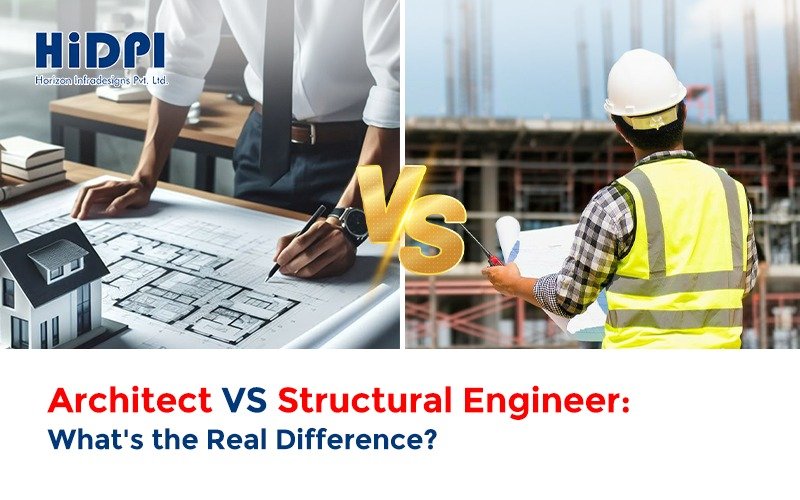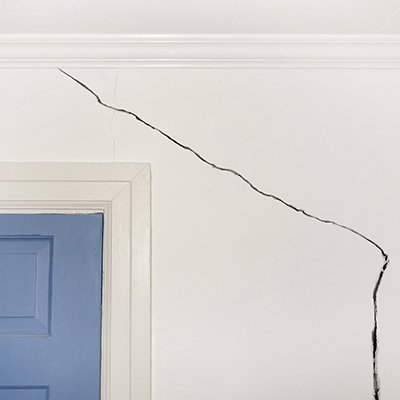What Is the Difference Between an Architect and a Structural Engineer?
When it comes to designing and constructing a building, many professionals are involved in bringing the vision to life. Two of the most critical contributors to any construction project are architects and structural engineers. While their roles often overlap in collaborative ways, they serve distinct purposes in the building process. At Horizon Infradesigns, we frequently work with professionals to ensure that each structure we develop is both aesthetically pleasing and structurally sound.
In this blog, we’ll explore the key differences between architects and structural engineers—their education, responsibilities, focus areas, and how they collaborate on a project.
Understanding the Core Roles
Who Is an Architect?
An architect is a trained professional who designs the aesthetics, functionality, and spatial experience of buildings. They envision how a structure will look, feel, and serve its users. Their work combines creativity, design principles, and a deep understanding of how spaces impact people’s lives.
Architects are responsible for:
- Creating the conceptual design of a building
- Planning spatial layouts and user flows
- Ensuring that the design complies with zoning and building codes
- Considering natural light, ventilation, and environmental impact
- Choosing materials, finishes, and fixtures
- Coordinating with clients to align the design with their vision and needs
Who Is a Structural Engineer?
A structural engineer, on the other hand, is a specialist who ensures that a building can withstand the physical forces it will encounter—such as gravity, wind, earthquakes, and heavy loads. Their work revolves around the integrity and safety of the structure.
Structural Engineering Consultants are responsible for:
- Designing the structural framework (beams, columns, foundations, etc.)
- Calculating loads and stress distributions
- Selecting materials based on strength, durability, and cost
- Ensuring the structure meets safety standards and codes
- Analyzing the impact of environmental conditions on the structure
- Preventing collapse, deformation, and failure over time.
Key Differences Between Architects and Structural Engineers
Focus and Objective
- Architects focus on the form and function of a building. They ask: How will the building be used? How should it look? How will people move through it?
- Structural engineers focus on stability and safety. They ask: How can this design be supported? Will it hold up over time? Is it resistant to natural forces?
Tools and Methods
- Architects use tools like AutoCAD, SketchUp, Revit, and 3D rendering software to visualize and present their ideas.
- Structural engineers rely on analytical tools like STAAD Pro, ETABS, SAP2000, and Finite Element Analysis (FEA) software to perform complex calculations and stress analysis.
Design vs. Execution
- Architects conceptualize the building’s form and user experience, often working closely with clients during the early stages of the project.
- Structural engineers work mostly during the planning and execution phases, ensuring the architect’s vision can be realized safely and within engineering constraints.
Aesthetic vs. Technical Approach
- Architects blend art and science to design inspiring, comfortable, and functional spaces.
- Structural engineers apply physics and mathematics to build strong, efficient, and durable frameworks.
Education and Licensing
Architects:
- Typically earn a Bachelor of Architecture (B.Arch) or Master of Architecture (M.Arch)
- Undergo internships and complete design portfolios
- Pass national licensing exams (like the Council of Architecture in India)
- Are often required to participate in continuous education
Structural Engineers:
- Usually hold a Bachelor’s or Master’s degree in Civil Engineering, with a focus on structural design
- Must master engineering mathematics, materials science, and structural analysis
- Obtain licenses through regulatory bodies (like the Institution of Engineers or State PWD departments)
- May also pursue certification as Chartered Engineers.
Collaboration Between Architects and Structural Engineers
Although their roles are different, architects and structural engineers must work collaboratively for any successful construction project. This partnership ensures that both creative vision and technical soundness are achieved.
Here's how their collaboration usually plays out:
1. Initial Design Phase
The architect leads the creative process, developing sketches, layouts, and models. Once the preliminary design is ready, the structural engineer reviews it to evaluate feasibility and suggest necessary structural elements.
2. Structural Analysis and Modifications
The engineer provides feedback on load-bearing elements, required materials, and possible reinforcements. They may recommend adjustments to support the architectural design without compromising safety.
3. Detailed Planning
As the design evolves, both professionals iterate and refine their inputs. Architects may alter some aspects based on engineering limitations, while engineers adapt their calculations to maintain the design's integrity.
4. Construction Phase
During construction, structural engineers supervise the building of the framework, while architects may oversee finishes, aesthetics, and layout execution.
This teamwork creates a balance between design ambition and structural reliability—a hallmark of quality construction at Horizon Infradesigns.
Real-World Example
Imagine you're building a multi-story commercial complex.
• The architect designs the layout: where offices, meeting rooms, staircases, and elevators go. They ensure the building aligns with brand aesthetics, maximizes natural lighting, and creates a welcoming environment.
• The structural engineer calculates how thick the foundation should be, where to place columns for optimal support, and what materials are best suited to the soil and climate conditions.
Without the architect, the building would lack purpose and appeal. Without the structural engineer, the building could become unsafe. Together, they transform ideas into reality. At Horizon Infradesigns, a leading construction company in Jaipur, we have a team of both expert architects and structural engineers who bring every design to life with precision and purpose.
Final Thoughts from Horizon Infradesigns
At Horizon Infradesigns, we believe that every great building is the result of a synergistic relationship between architecture and structural engineering. Both disciplines are equally vital and mutually dependent.
Architects bring vision, innovation, and aesthetics. Structural engineers contribute precision, strength, and durability. Understanding their differences not only helps you appreciate the depth of construction planning but also ensures better decision-making when embarking on a building project.
As experienced Turnkey Contractors, we manage everything from concept to completion. If you’re planning to design and build a new space, reach out to us—we’ll connect you with the right professionals and guide you through every step of the process.






